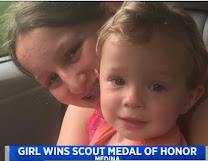When we say May Day, it may bring to mind festivals of spring... or airplane pilots in distress. But, in the world of archives, historical societies, libraries, and museums, MayDay has a very different meaning! Each year, May 1 is the day these organizations set aside to participate in emergency/disaster preparedness activities.
All sorts of threats can befall an archival collection. Some affect us equally: any building can potentially flood or catch fire. Other threats are more specific to one’s location, like earthquakes, floods, hurricanes, tornadoes, and/or wildfires. One goal of MayDay is to reflect on these potential threats and plan ways to minimize their impact on a collection.
Archivists will tell you: you can’t save everything. It might sound like a defeatist attitude, but really, it’s a reminder to be realistic about limitations. Institutions and individuals alike all have limitations. Even in the best of times – and certainly in a disaster – we are all limited on the amount of time we can devote to a project, the amount of space we have to store or transport items, and the amount of money we can spend on cloud storage or archival storage materials.
Because of these limitations, one of the best preparation activities you can take with your personal archive is to prioritize your heirlooms. The motto of MayDay is “Be prepared!” so, with that in mind, here are four tips for prioritizing your personal collection.
Tip 1: Divide and conquer.
A first step in prioritization is to divide up your heirlooms in terms of those that can be digitized and those that cannot. Most likely you're going to be dividing your heirlooms up by those that are two-dimensional versus those that are three-dimensional.
Two-dimensional items that can be scanned will include photographs and documents, like birth certificates, marriage records, land deeds, newspaper clippings and obituaries, and more. A few three-dimensional items might be able to be scanned as well, such as a family scrapbook, photo album, or a framed picture.
Three-dimensional heirlooms that you probably won't be able to digitize may include clothing, dishware, furniture, jewelry, quilts, and toys.
Depending on which category your heirloom falls into, it will determine your next step.
Tip 2: Digitize and remember LOCKSS.
MCDL Genealogy Team member Lisa Rienerth has created a great video on digitization; view it on MCDL's YouTube Channel. When you're digitizing, if you're short on time, don't be afraid to prioritize these items, too. Start with your oldest and most special items first. Skip landscapes, duplicate photos, and any blurry images.
After you've digitized, practice LOCKSS. LOCKSS is an acronym that stands for “Lots of Copies Keep Stuff Safe.” As explained by the Society of American Archivists, the idea behind LOCKSS is to have the same object or image in multiple locations – so the sole copy can’t be destroyed without having a backup. To put this principle into practice, keep your both original copies and your digital copies, but distribute copies liberally. For example:
For your digital copies...
Save them to your home computer
Store them in cloud storage
If they are out of copyright, share them in online family trees (such as Ancestry and FamilySearch)
Save them to an external hard drive and keep the drive at a location other than your home
Email copies to relatives
For your physical, original copies…
If the originals are plentiful, or you have similar or duplicate images, send copies to relatives
If the originals are unique, print new copies are share those with family members
If you are using your photographs and documents to create a family history, ask if your local archive or library accepts donations of personal research. This can be a great way to share your treasures with others and it provides another backup location, in case your heirlooms are destroyed or lost.
Tip 3: Document your heirlooms.
For all of your objects that cannot be digitized, you will want to document them thoroughly. We talked about documenting heirlooms on the blog earlier this year. Documenting your heirlooms involves describing them in writing, labeling them, and photographing them. Use this Heirloom Documentation Form to help in this process.
While you’re documenting the heirlooms, create an inventory. Write down when you became the owner of the heirloom, a brief description, and its previous owner. Here is a free Heirloom Inventory Form you can use in this process.
As you’re creating your inventory, start to prioritize your heirlooms. Consider...
What you could take with you, if you had to evacuate. (Think small and portable!)
Gathering your most precious heirlooms in one-location, possibly near an exit.
Purchasing archival boxes for storing some/all your heirlooms. (Remember: a box is easier to transport than loose items and archival boxes can provide a barrier between treasures and water/smoke damage.)
If you have multiple, similar items (say an Aunt’s china set or several quilts by a great-grandmother) with which you could practice LOCKSS, by sharing your treasures with other family members.
Prioritizing in advance will save you precious time in an emergency.
Tip 4: Prioritization & Preparation is a Marathon, Not a Sprint!
MayDay is the perfect time to start the process of prioritizing your personal archive and preparing for potential disasters. But don’t expect that you will be finished in a day! Instead, use May 1 as a starting point with the goal to finish digitizing, documenting, and prioritizing by MayDay 2022.
Learn More
Want to learn more about MayDay and steps you can take to protect your family’s treasures? Check out these resources!
11 Ways to Protect Your Genealogy Research From Disaster by Denise May Levenick
Plan Ahead: Protect Your Genealogy from Disaster by Ancestry
Ideas for MayDay Activities by the Society for American Archivists
As always, you can contact the MCDL Genealogy Team with questions. Email us at me-team.genealogy@mcdl.info.







































